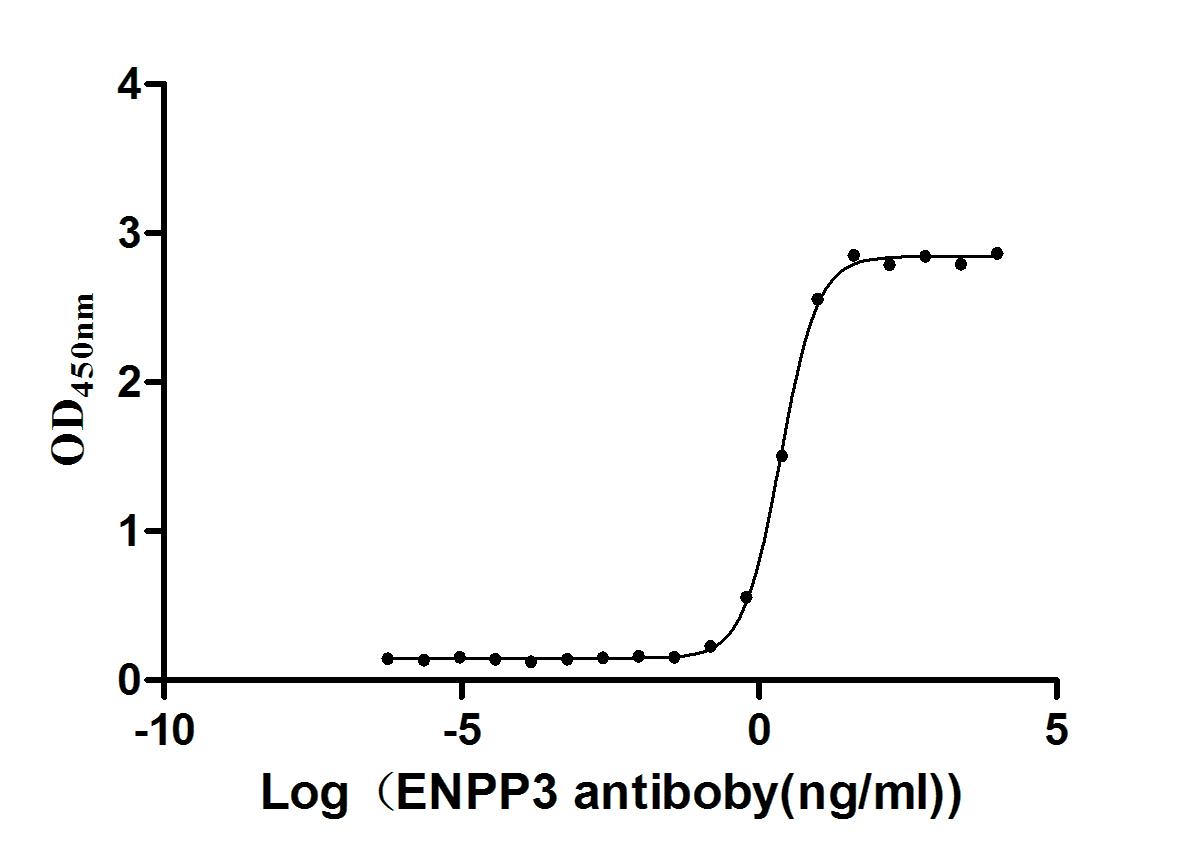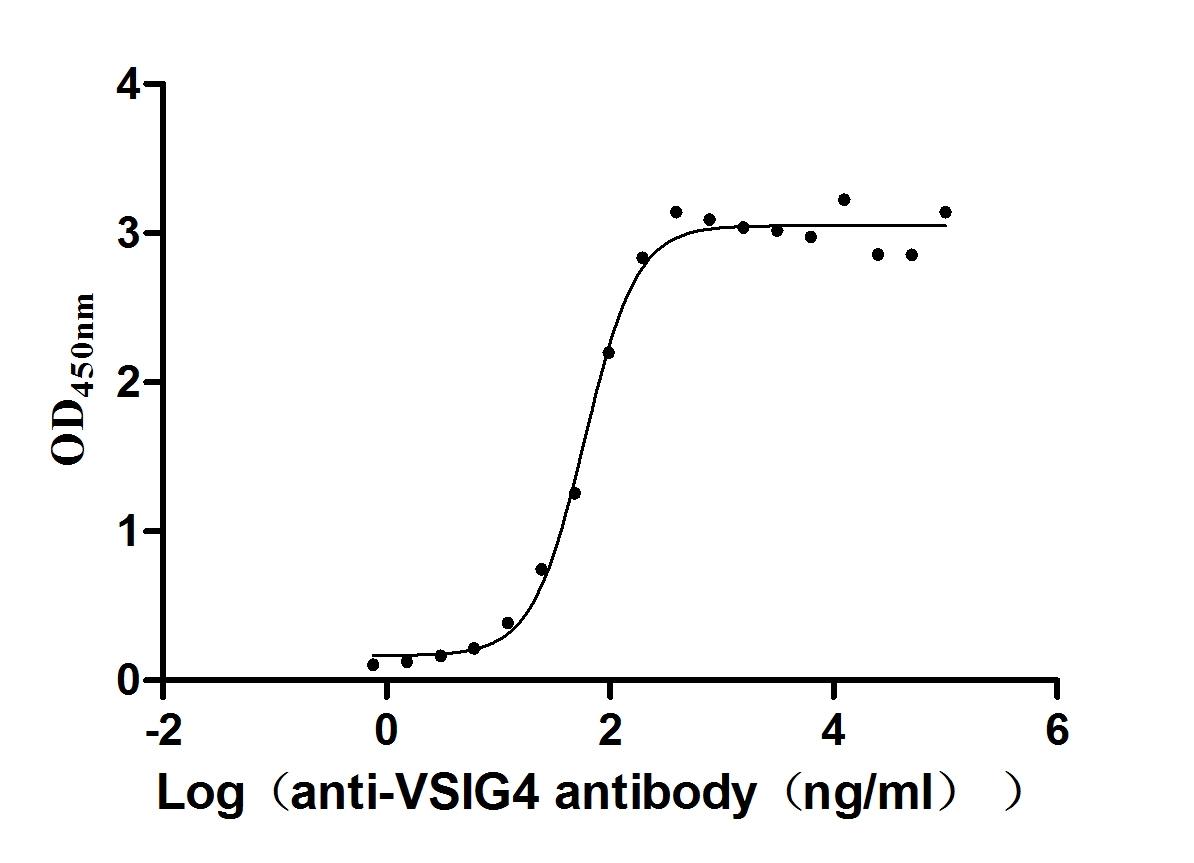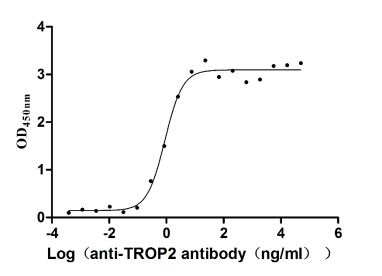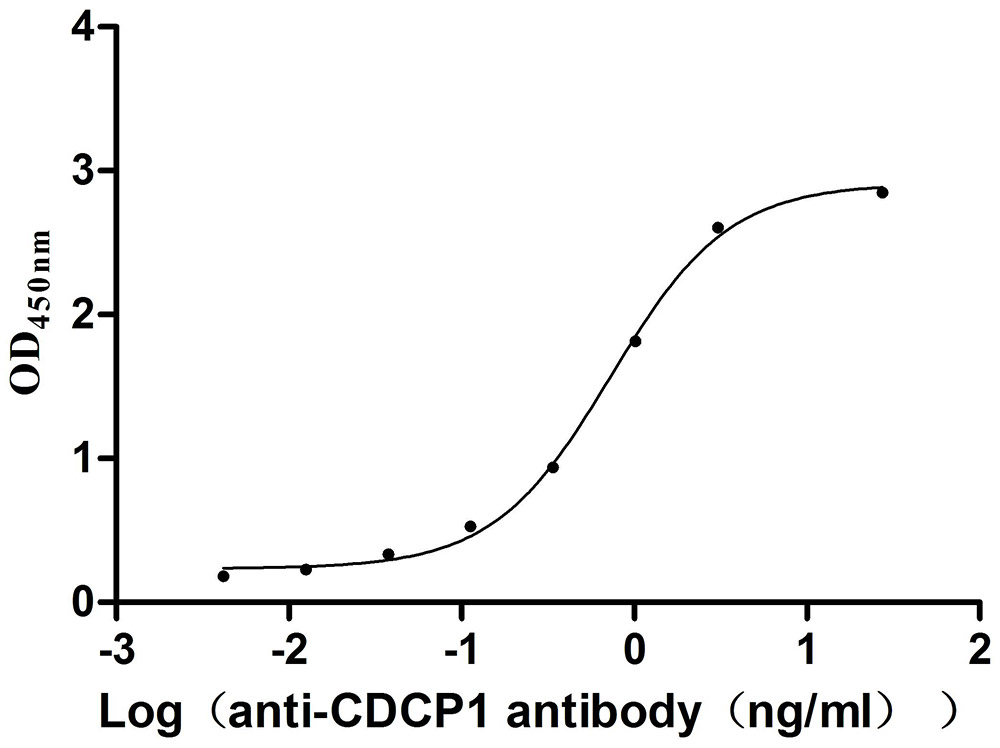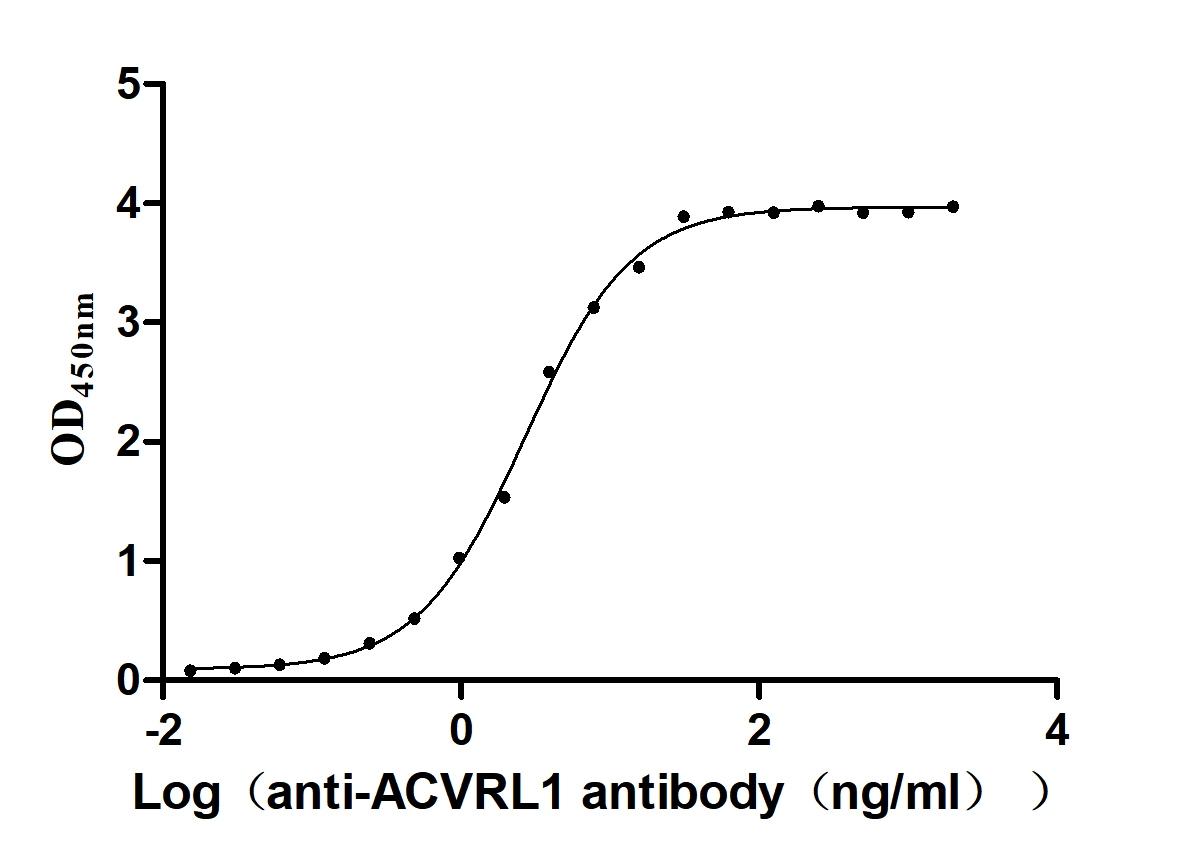Recombinant Mouse Neurexin-1-alpha (Nrxn1), partial
-
中文名称:小鼠Nrxn1重组蛋白
-
货号:CSB-YP863442MO
-
规格:
-
来源:Yeast
-
其他:
-
中文名称:小鼠Nrxn1重组蛋白
-
货号:CSB-EP863442MO
-
规格:
-
来源:E.coli
-
其他:
-
中文名称:小鼠Nrxn1重组蛋白
-
货号:CSB-EP863442MO-B
-
规格:
-
来源:E.coli
-
共轭:Avi-tag Biotinylated
E. coli biotin ligase (BirA) is highly specific in covalently attaching biotin to the 15 amino acid AviTag peptide. This recombinant protein was biotinylated in vivo by AviTag-BirA technology, which method is BriA catalyzes amide linkage between the biotin and the specific lysine of the AviTag.
-
其他:
-
中文名称:小鼠Nrxn1重组蛋白
-
货号:CSB-BP863442MO
-
规格:
-
来源:Baculovirus
-
其他:
-
中文名称:小鼠Nrxn1重组蛋白
-
货号:CSB-MP863442MO
-
规格:
-
来源:Mammalian cell
-
其他:
产品详情
-
纯度:>85% (SDS-PAGE)
-
基因名:Nrxn1
-
Uniprot No.:
-
别名:Nrxn1; Kiaa0578; Neurexin-1; Neurexin I-alpha; Neurexin-1-alpha
-
种属:Mus musculus (Mouse)
-
蛋白长度:Partial
-
蛋白标签:Tag type will be determined during the manufacturing process.
The tag type will be determined during production process. If you have specified tag type, please tell us and we will develop the specified tag preferentially. -
产品提供形式:Lyophilized powder
Note: We will preferentially ship the format that we have in stock, however, if you have any special requirement for the format, please remark your requirement when placing the order, we will prepare according to your demand. -
复溶:We recommend that this vial be briefly centrifuged prior to opening to bring the contents to the bottom. Please reconstitute protein in deionized sterile water to a concentration of 0.1-1.0 mg/mL.We recommend to add 5-50% of glycerol (final concentration) and aliquot for long-term storage at -20℃/-80℃. Our default final concentration of glycerol is 50%. Customers could use it as reference.
-
储存条件:Store at -20°C/-80°C upon receipt, aliquoting is necessary for mutiple use. Avoid repeated freeze-thaw cycles.
-
保质期:The shelf life is related to many factors, storage state, buffer ingredients, storage temperature and the stability of the protein itself.
Generally, the shelf life of liquid form is 6 months at -20°C/-80°C. The shelf life of lyophilized form is 12 months at -20°C/-80°C. -
货期:Delivery time may differ from different purchasing way or location, please kindly consult your local distributors for specific delivery time.Note: All of our proteins are default shipped with normal blue ice packs, if you request to ship with dry ice, please communicate with us in advance and extra fees will be charged.
-
注意事项:Repeated freezing and thawing is not recommended. Store working aliquots at 4°C for up to one week.
-
Datasheet :Please contact us to get it.
靶点详情
-
功能:Cell surface protein involved in cell-cell-interactions, exocytosis of secretory granules and regulation of signal transmission. Function is isoform-specific. Alpha-type isoforms have a long N-terminus with six laminin G-like domains and play an important role in synaptic signal transmission. Alpha-type isoforms play a role in the regulation of calcium channel activity and Ca(2+)-triggered neurotransmitter release at synapses and at neuromuscular junctions. They play an important role in Ca(2+)-triggered exocytosis of secretory granules in pituitary gland. They may effect their functions at synapses and in endocrine cells via their interactions with proteins from the exocytotic machinery. Likewise, alpha-type isoforms play a role in regulating the activity of postsynaptic NMDA receptors, a subtype of glutamate-gated ion channels. Both alpha-type and beta-type isoforms may play a role in the formation or maintenance of synaptic junctions via their interactions (via the extracellular domains) with neuroligin family members, CBLN1 or CBLN2. In vitro, triggers the de novo formation of presynaptic structures. May be involved in specification of excitatory synapses. Alpha-type isoforms were first identified as receptors for alpha-latrotoxin from spider venom.
-
基因功能参考文献:
- Data report that the expression of nrxn1alpha in primary cortical neuron cultures underwent activity-dependent repression and found that Ash1L binds to nrxn1alpha promoter in neurons to regulate its expression. PMID: 27229316
- After pan-neurexin deletions, we observed in these synapses severe but dramatically different synaptic phenotypes that ranged from major impairments in their distribution and function (climbing-fiber synapses) to large decreases in synapse numbers (parvalbumin-positive synapses) and severe alterations in action potential-induced presynaptic Ca(2+) transients (somatostatin-positive synapses). PMID: 28472659
- Findings demonstrate that the heterozygous loss of alpha-neurexin I and alpha-neurexin II in mice leads to phenotypes relevant to autism and schizophrenia PMID: 26595880
- Study shows that astrocyte-secreted hevin is a trans-synaptic linker that bridges presynaptic NRX1alpha with postsynaptic NL1B. This way, hevin organizes both pre- and postsynaptic specializations and aligns them across the synapse. PMID: 26771491
- Nlgn3 and Nrxn1 are differentially expressed in cerebral cortex and hippocampus which might be responsible for alterations in synaptic plasticity during agine. PMID: 25693924
- This study identify distinct differences between major Nrxn variants both in surface mobility and during intracellular transport. PMID: 26446217
- Thus our data suggest that perinatal exposure to BPA impairs spatial memory through upregulation of expression of synaptic proteins Nrxn1 and Nlgn3 and increased dendritic spine density in cerebral cortex and hippocampus of postnatal male mice. PMID: 25330104
- Mutant neurexin-1beta expression in mouse adult brain leads to core autism symptoms. PMID: 25017069
- Deletions within NRXN1 found in patients may be responsible for the impairments seen in social behaviours and Nrxn1alpha knockout mice are a useful model of human neurodevelopmental disorders. PMID: 23840597
- Nrxn1 and Nlgn genes that may represent an important aspect of their function at synapses in health and disease PMID: 23875667
- Cross-species co-expression and protein interaction network analyses identify glycogen synthase kinase 3 beta (GSK3B) as one of the most consistent and conserved covariates of NRXN1. PMID: 22832527
- Parallel fiber protrusion triggered by neurexin signaling promotes bidirectional maturation of parallel fiber-Purkinje cell synapses by positive feedback. PMID: 23141067
- behavioral manifestations caused by NRXN1alpha gene mutations; gender-specific mechanisms play an important role in Nrxn1alpha-induced phenotypes. PMID: 22348092
- Neurexin-1alpha is a component of the beta-cell secretory machinery and contributes to secretory granule docking, most likely through interactions with granuphilin. PMID: 22235116
- Findings uncover SAM68 as a key regulator of dynamic control of Nrxn1 molecular diversity and activity-dependent alternative splicing in the central nervous system. PMID: 22196734
- Presenilin/gamma-secretase regulates neurexin processing at synapses PMID: 21559374
- Data show that Cbln1 and Cbln2, but not Cbln4, specifically bind to neurexin 1alpha and -beta and induce synaptogenesis in cerebellar, hippocampal and cortical neurons in vitro. PMID: 21410790
- Data indicate that both NRX1alpha and NRX1beta are delivered to presynaptic terminals but show significant and different turnover rate at the membrane. PMID: 21149722
- Neurexins and neuroligins, which constitute large and complex families of fundamental players in synaptic activity, are produced and processed by endothelial and vascular smooth muscle cells throughout the vasculature. PMID: 19926856
- Both the amino terminal domain of GluRdelta2 and the extracellular domain of NRXN1beta suppressed the synaptogenic activity of Cbln1 in cerebellar primary cultures and in vivo. PMID: 20537373
- neurexin-1beta binds to neuroligin-1 in an interaction whose specificity depends on glycosylation, mRNA splicing and gene selection of neuroligin PMID: 14522992
- Loss of alpha-neurexins induces postsynaptic changes by a cell-autonomous mechanism. PMID: 14983056
- Our data indicate that neurexins are delivered to synapses by a polarized and regulated targeting process that involves PDZ-domain mediated interactions, suggesting a novel pathway for the distribution of neurexins and other synaptic proteins. PMID: 19036990
- Hippocampal slice physiology uncovered a defect in excitatory synaptic strength in neurexin-1alpha deficiency, revealed by a decrease in miniature excitatory postsynaptic current frequency and in the input-output relation of evoked postsynaptic potentials PMID: 19822762
显示更多
收起更多
-
亚细胞定位:Cell junction, synapse, presynaptic cell membrane; Single-pass type I membrane protein.
-
蛋白家族:Neurexin family
-
数据库链接:
STRING: 10090.ENSMUSP00000125407
UniGene: Mm.478418
Most popular with customers
-
Express system: Mammalian cell
Species: Homo sapiens (Human)
-
Recombinant Human V-set and immunoglobulin domain-containing protein 4 (VSIG4), partial (Active)
Express system: Mammalian cell
Species: Homo sapiens (Human)
-
Recombinant Human Tumor-associated calcium signal transducer 2 (TACSTD2), partial (Active)
Express system: Mammalian cell
Species: Homo sapiens (Human)
-
Recombinant Mouse CUB domain-containing protein 1 (Cdcp1), partial (Active)
Express system: Mammalian cell
Species: Mus musculus (Mouse)
-
Recombinant Human Serine/threonine-protein kinase receptor R3 (ACVRL1), partial (Active)
Express system: Baculovirus
Species: Homo sapiens (Human)


